September 29, 2017
By: Emily Guilu Murphy, Wesleyan University.
This summer I had the privilege to work with Growing Hope as their garden intern. Growing Hope is a non-profit started in Ypsilanti “dedicated to helping people improve their lives and communities through gardening and increasing access to healthy food.” (Source: http://growinghope.net/about-us/mission-impact/)
Mondays: Propagation and Watering
9:00AM Hoop House
In “Kathy,” our cathedral style hoop house, I start my mornings following a propagation schedule. At Growing Hope we seed most of our plants in trays to help us to control the seeds’ environment like soil nutrients and moisture content. This increases the chances that the seeds will germinate and eventually reach maturity.
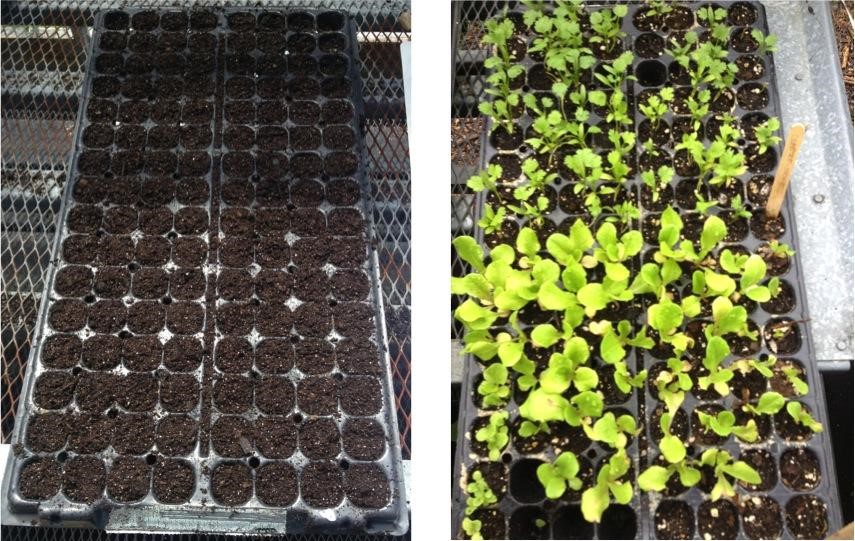
Tray when first seeded; tray after about a week and a half
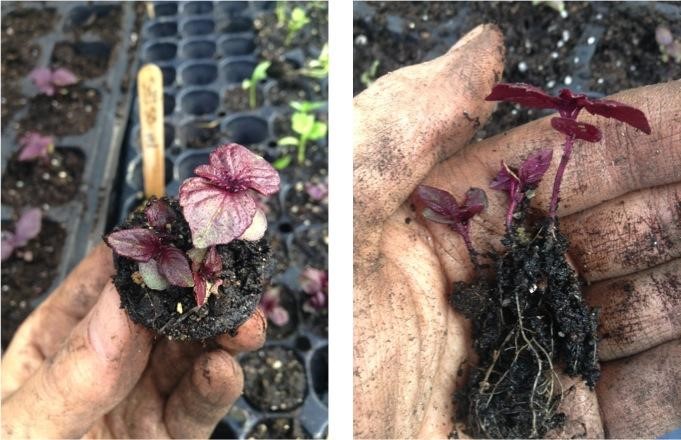
We thin trays by making sure each cell only has one plant in it to decrease competition for water and nutrients
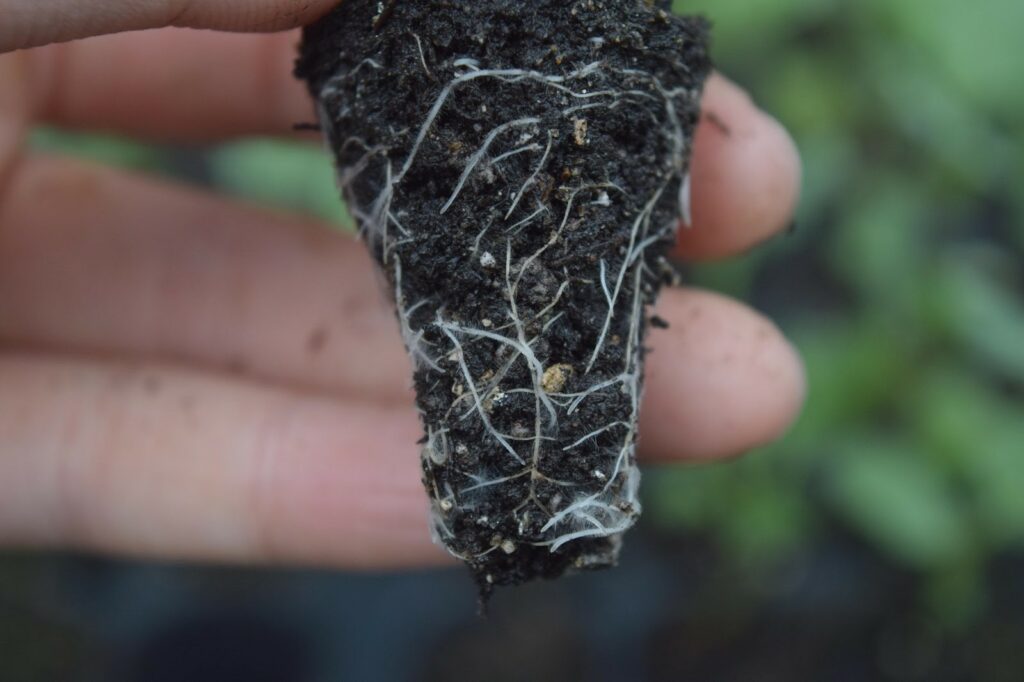
Healthy and developed roots with root fibers (the white fuzzy part on the roots)
12:00PM Growing Hope Farm
Growing Hope has nine different growing areas to keep track of! The hoop house with all the seedlings must get watered several times a day to keep the seeds wet to germinate. Some areas need more water than others like the hoop house and outside farm. Others don’t need water every day like the herb garden with hardier crops.

Dry and wet soil

When watering, make sure to water long enough for the plants’ deepest roots to absorb the water. You can see in this plant’s cell, the top is moist, but the bottom is still dry.

(Left to right) 1. Oscillating sprinklers (most inefficient method due to high rate of evaporation) 2. Soaker hose (water seeps out through hose) 3. Drip irrigation (most efficient, only drips at certain intervals along the drip tape)
Tuesdays: Community Outreach
9:00AM Ypsilanti Resident Home
One of my favorite opportunities working with Growing Hope was the opportunity to learn and practice actual community building strategies. In the future I hope to promote community-based solutions to environmental/climate justice and public health issues. Growing Hope showed me what an organization oriented around community-based food justice solutions might look like.
Growing Hope’s Home Vegetable Program installs raised beds for gardening in low-income Ypsilanti residents’ homes at no cost. I got to get out in the community and go on several mid-season site visits assisting with any planting, pest, or weed problems they had and connecting with people through their gardens. It was impactful to see how Growing Hope, the gardens, and their harvest made a difference in residents’ lives!

Bianca and I when we re-seeded her garden bed; Maria and her fresh harvest of radishes and peppers
2:00PM Growing Hope Center
Another one of the ways Growing Hope engages the community is through hosting social events like Tour de Fresh, a community bike tour of Ypsilanti’s community gardens. I assisted with the project planning and was able to practice community outreach by designing posters, contacting community members, and designing social media posts.
Wednesdays: Volunteers and Environmental Justice
9:00AM Growing Hope Farm
Another way I got to know the community was through Growing Hope’s volunteers who are often from the Ypsilanti/Ann Arbor area. Through co-leading volunteer groups in farm tasks, I got to talk about Growing Hope’s mission as a food justice non-profit and give tours of Growing Hope’s urban farm.
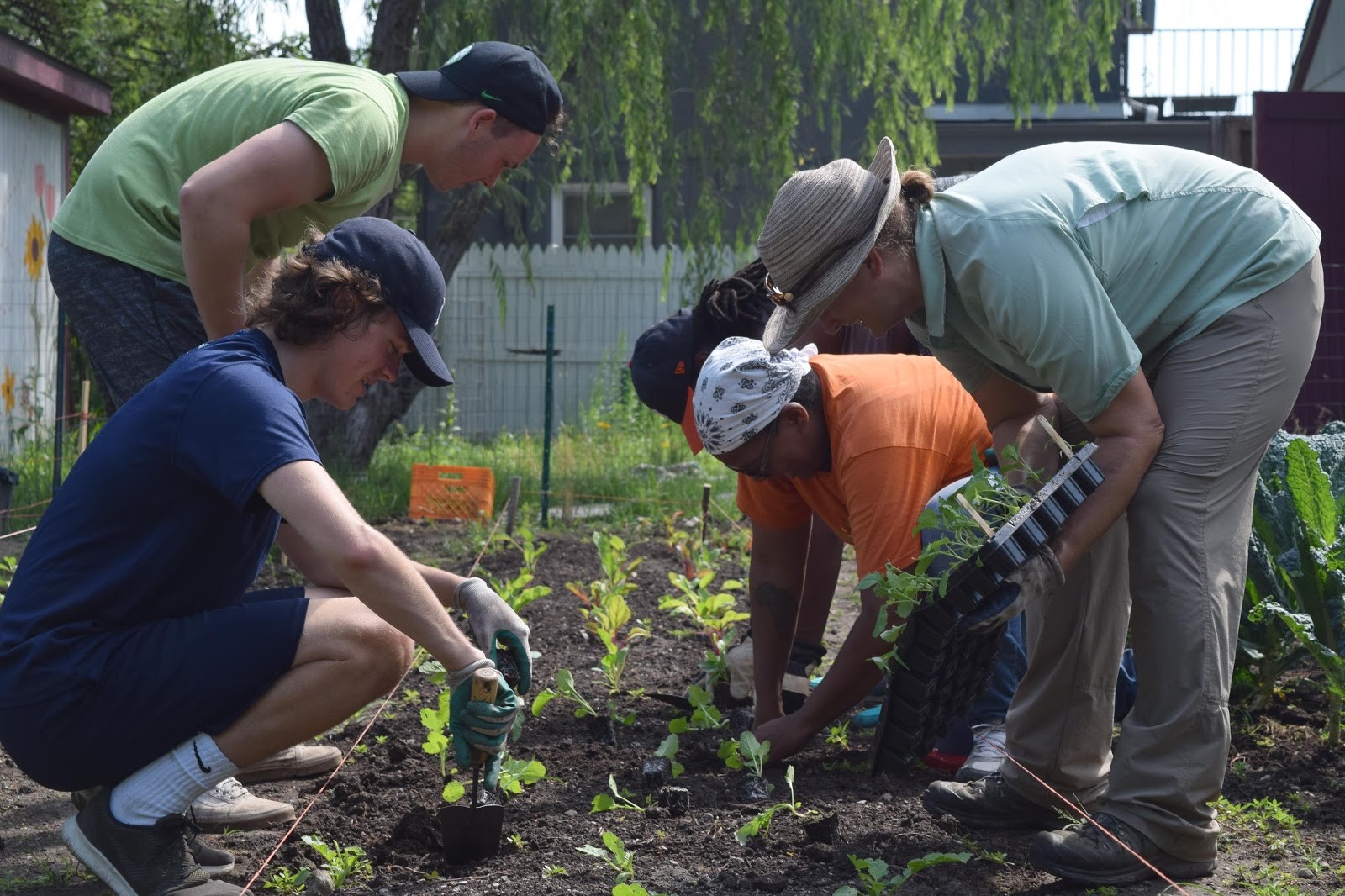
10:00 AM Growing Hope Farm
We did a lot of weeding so I became familiar with the farm’s common weeding tools.
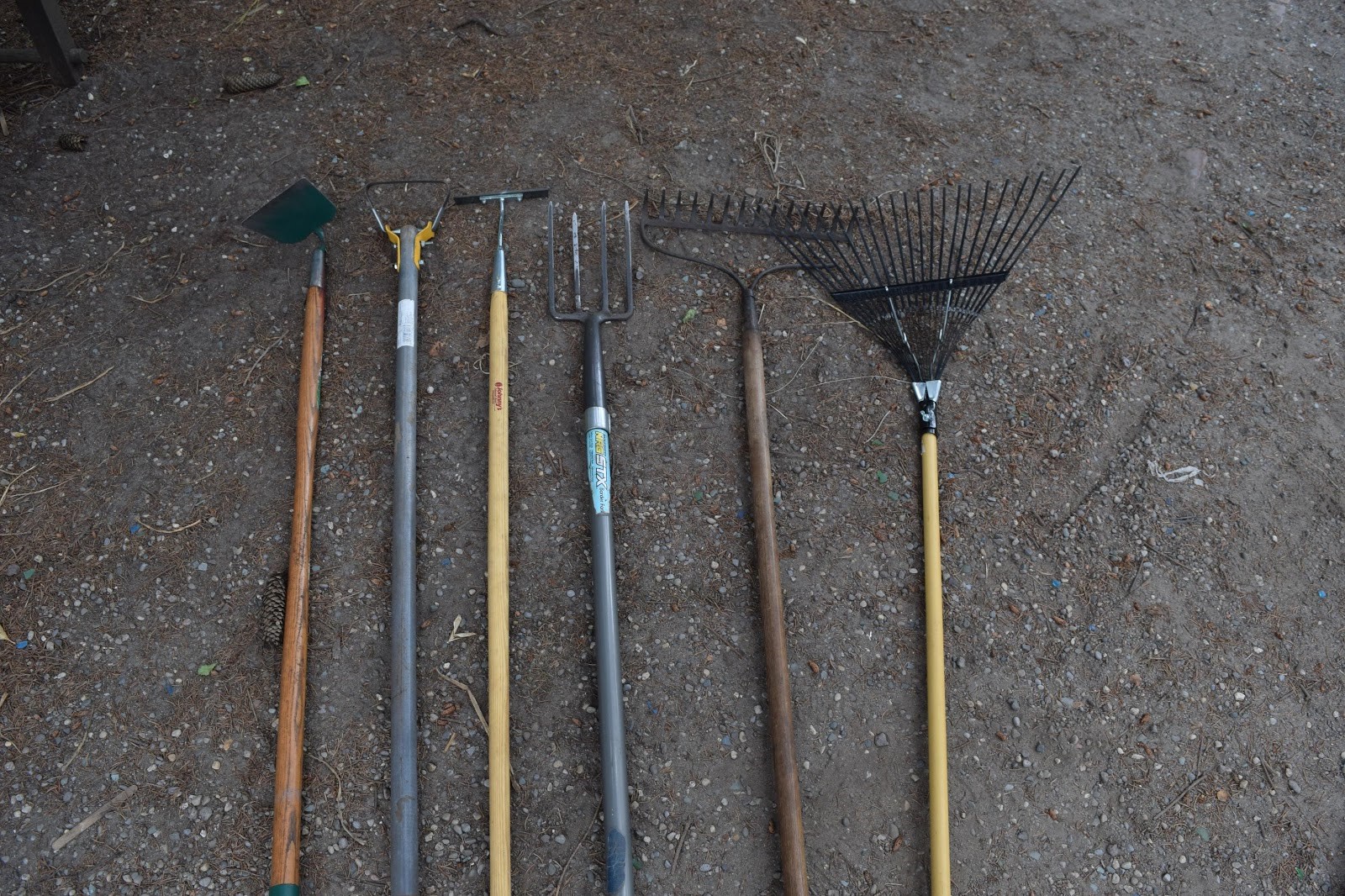
(Left to right) 1. Garden/flower hoe- good for loosening soil and taking out weeds and old plants, not good for weeding in between plants 2. Action/hula/stirrup hoe- convenient for weeding, uses a back and forth motion 3. Collinear hoe- good small weeds and precise weeding; just scrape the surface to disrupt their roots and the weeds will die 4. Fork- can be used to pull up weeds roots so they are easier to pull out without breaking 5. Garden rake- used to rake up weeds, has wider teeth 6. Fine rake- used if there are many small weeds.
11:00AM Growing Hope Farm
I have a strong interest in environmental justice and ways to further address it through dialogue or work. I created a working definition of environmental justice with help from the volunteers to be able to easily explain what it is: environmental justice is ensuring and protecting the right to a healthy physical environment and equitable accessibility to the environment regardless of socioeconomic status or other limiting social factors. Through these conversations I was reminded to avoid off-putting academic jargon by meeting people at their level and focusing on their lived experiences with the environment to learn from them.
Thursday: Staff Meetings/Non-Profit Management
9:00AM Growing Hope Center
At staff meetings I go to learn about what other staff were working on because Growing Hope has so many moving parts and projects. I otherwise would not have known the extent of Growing Hope’s work like running the farmers market and mobile farm stand or the challenges of running a non-profit including economic development, grant writing, staffing, financial audits, project planning, setting and assessing deliverables, and more.
12:00PM Lunch
Growing Hope’s work culture shares similarities with other environmental non-profits, but is also very distinct. Although Growing Hope staff gets so much done, there never seems to be enough time or resources. However, I was very lucky to work in a place where the staff know each other and promoted a kind and caring work environment.
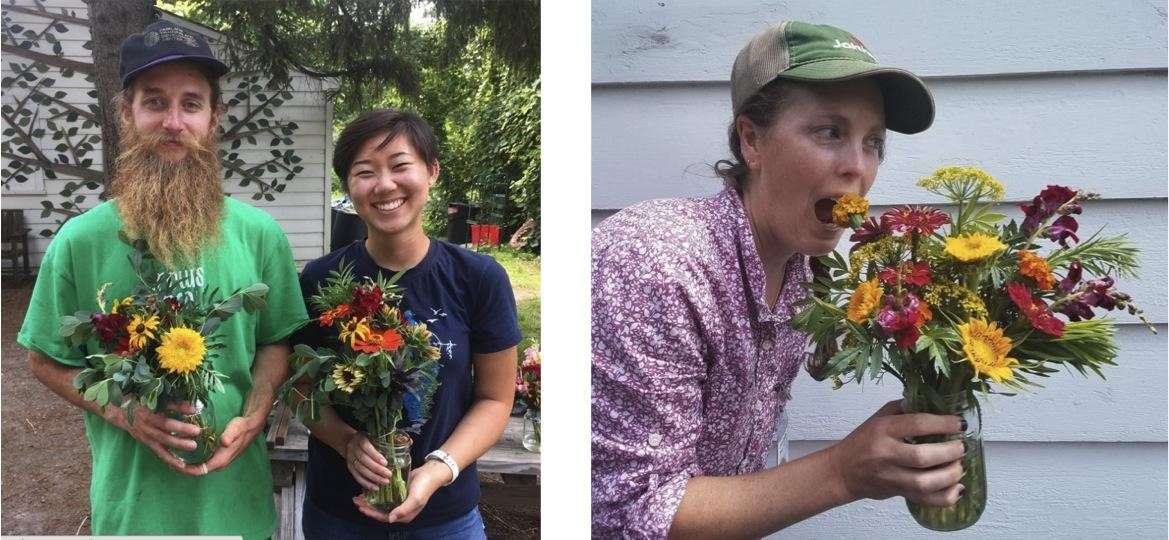
Christopher, the farm assistant, and I with the bouquets we made; my supervisor Bee Ayer, farm manager and far superior bouquet arranger